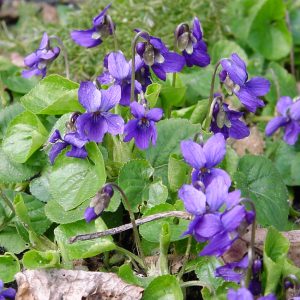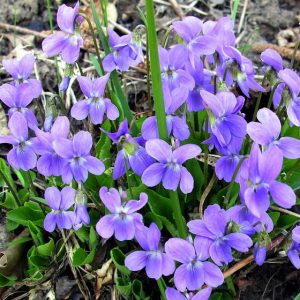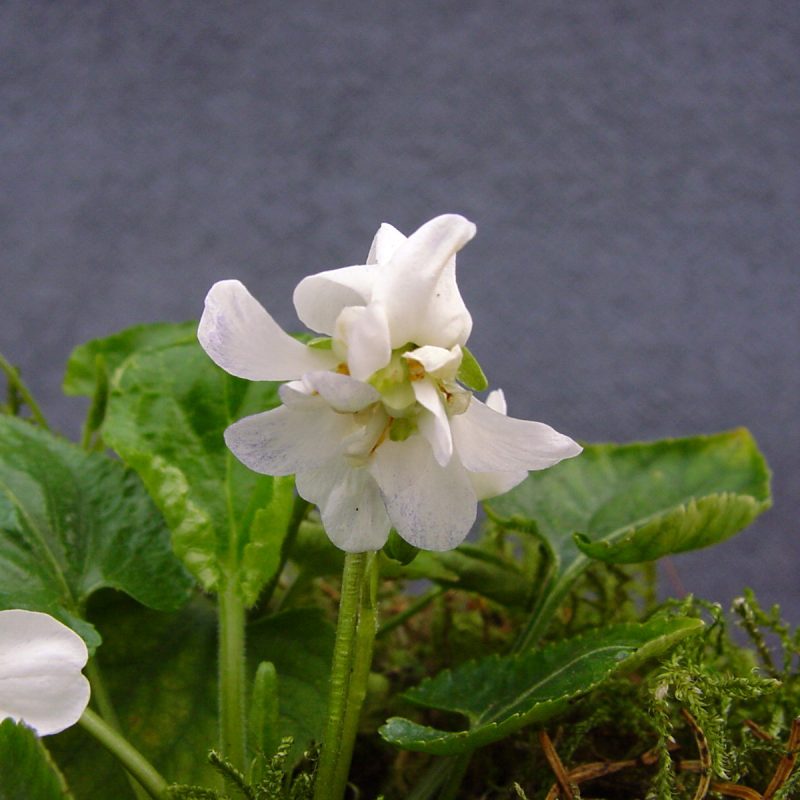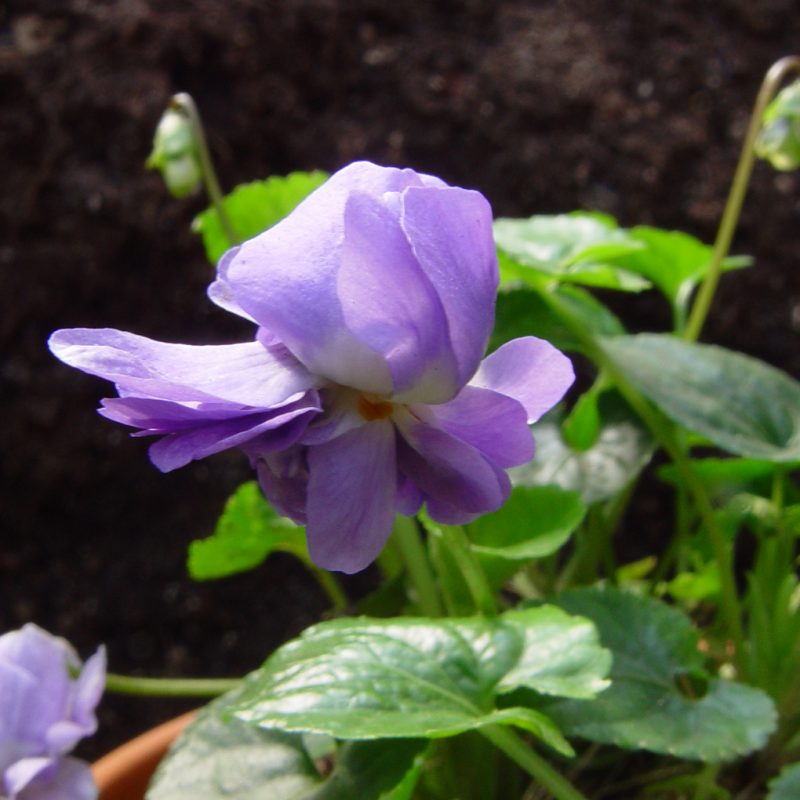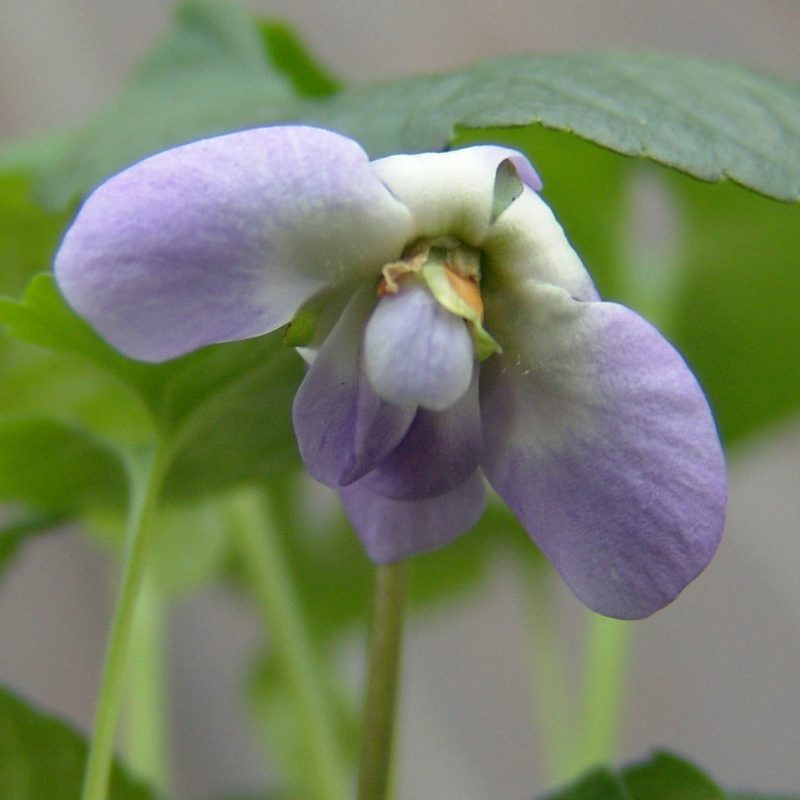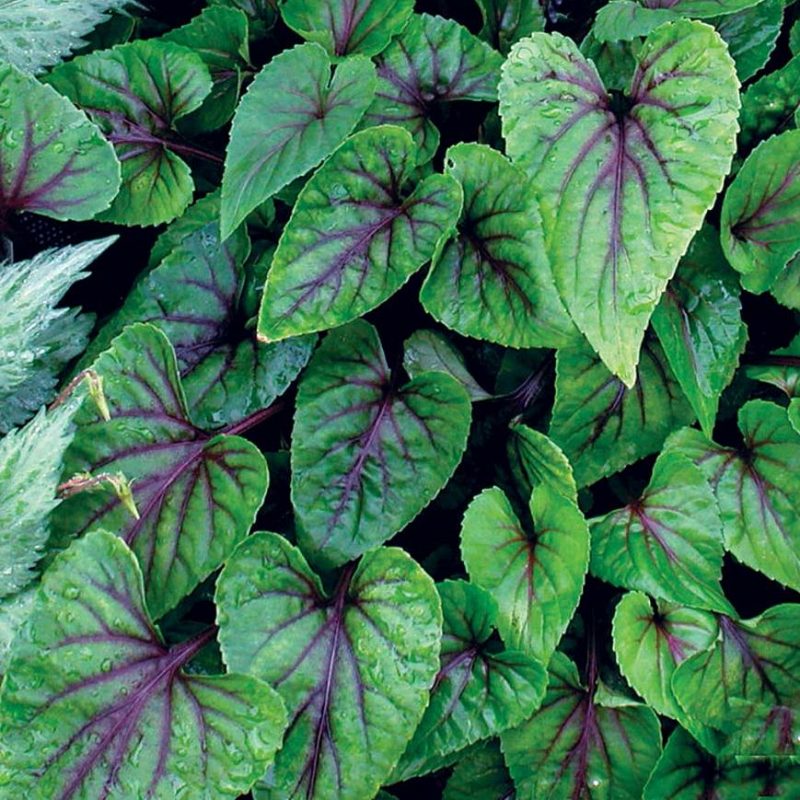You just have to love these fellows. Be it because everyone knows them, because the scent takes us back to childhood or we are amazed that the violets are not all blue. But the blue ones still smell the best ...
No matter why you stay on this page, it's worth it! There is a lot to discover here, from well-tried varieties of the scented violet to dwarf rock garden and proliferating Pentecostal violets.
What all violets have in common is their preference for strong, well-drained soil and lots of space to spread out. So why not plant under the hedge strips where something else might not grow well? Or on the slope to the cellar window? There are also beauties for the shady part of the rock garden, but think about seed multiplication - there are more and more!
Botanical for everyone! Viola odorata (scented violet) is an inhabitant of the light shade and grows ideally under higher trees, bushes or in the house shade. High humidity is important, so you should shower the violets on dry days. Over-showering also avoids the annoying spider mites. In order to really enjoy the wonderful scent, you need a large area of violets - it has to be multiplied. However, that is not a problem! The plants make beautiful runners that take root when they come into contact with the ground. And then there is the seed. However, it is only conditionally useful out of the bag; once it has dried out, it is dead. Therefore we let the plant sow itself and only then transplant it. You can even help, because ants spread the seeds all over the garden. Nature has made sure of this, because the seeds are covered in a tasty seed coat. Violets are "thermometers" because pink violets turn blue in the cold, red and violet ones change their color to slate blue. So first look into the garden and then dress warmly. The plants react strongly to temperatures anyway. Flower buds are only formed below 8-10 ° C. If it is warmer, seeds will form in the buds without pollination (Kleistogamy). From this it follows: only drive the violets in cool rooms and first bring them into the warm room with blossoms, otherwise they will not blossom. Violets are strong eaters or "eaters". In other words, they look forward to a gift of fresh compost, horn shavings or a liquid fertilizer for flowering. All large-flowered and double violets are grateful for a light winter protection (a few spruce veins are enough). Of course, other spring flowers go well with violets, such as primroses, snowdrops and auriculas. We like to combine with smaller species of hostas, as their leaves appear quite late and are welcome shade providers in summer. Thought, read and heard! "A day in spring without the scent of violets is a lost day" Paracelsus It all began in antiquity: Jupiter, the father of the gods, fell in love! At the insistence of the jealous wife, he turns the girl into a cow and, as an excuse, the lawn beneath her into three-colored flowers (viola tricolor). (At least it is true that cows like to eat field violets, in contrast to sheep and goats) In the 18th century, a bouquet of pansies was placed on the threshold of people who felt misunderstood or disregarded. Violet roots were considered an aphrodisiac. After the not very attractive god Vulcanus rubbed himself with violet roots, he was heard by Venus from then on. Goethe, not only a poet but also a gardener, is said to have increased the number of violets around Weimar by always taking a few seeds with him in his coat pocket. (You can read about some problems here in the botany section) Naming: pansy The wicked stepmother is sitting on two chairs with her birth children to the right and left. The stepchildren have to share a chair. Other interpretations point to the use of the root decoction as an abortion agent. The grim-looking face is also said to have reminded some of their mother-in-law. Symbol value: The violet stands for humility and modesty Regional customs: In the villages the first violets were put on a pole and danced around. In the cities, the one who appeared with the first violet on a stick in front of the gate became the herald of spring. He was solemnly welcomed and given a drink of honor. Medicinal plant: The violet root is used as an emetic (boil gently). Violet syrup is a cough suppressant for children and violet tea is a good gargle for sore throats. It has a calming effect and helps with headaches. In aromatherapy, the scent of violets cushions aggression. Violet cuisine Candied violets: Violet flowers as an edible decoration: Dip the flowers in egg white, sprinkle with powdered sugar and slowly dry in the oven. (deliciously nibbled) Odorata syrup: Scald about 200 blue flowers in a sealable pot with approx. 250 ml of boiling water (still mineral water is best). Close the pot and let it steep for 24 hours, shaking it several times. Filter the infusion through a moistened sheet (do not squeeze out). Bring the filtrate to the boil with 400 g sugar and a few teaspoons of lemon juice. (Color change from purple to magenta red). Simmer for about 10 minutes and skim off the foam. Pour the hot syrup into well-dried, clean bottles. ... and now the refinement can start. ... violet cream, violet ice cream, violet jelly .... Soft drink with honey: Pour boiling water over 20g of dried violets and 40g of dried rose hips and let them steep for 10 minutes. Drain through a sieve and, after cooling, sweeten with honey to taste. Violet punch: The flowers are more fragrant
Viola Veilchen, Pansy, Horned Violet, by Fritz Köhlein, Ulmer Verlag 1999, ISBN 3-8001-6655-0
Pansies and violets, by Marion Nickig / Elke von Radziewsky, Ellert & Richter Verlag Hamburg, 1999
A garden of fragrances, by Helga Urban, BLV, Munich, 1999, ISBN 3-405-15406-5
Handbook of Japanese Violets, by Seiya Tabuchi, 1996, ISBN 4-88616-069-7 (Japanese with botanical names)
Pansies, Violas and Violettas, by R. Fuller, The Crowood Press, 1990, ISBN 1852237481 (English)
Pansies, Violas and Sweet Violets, by E. Farrer, Hurst Village Publihing, 1989, ISBN 0951248111 (English)
on the Internet you can find, among other things:
International Violett Association publishes its journal on the Internet. It contains interesting reports on species and varieties, excursion reports, a culinary corner and many useful cross-references.
An extensive collection of violet links can be found on the pages of Helga and Klaus Urban. You can also order the very beautiful and signed book "A Garden of Fragrances" here.
Les Violettes shows, among other things, fantastic pictures and drawings in a beautiful homepage. (French)
Interesting pictures, articles and links can be found at www.ionia.demon.co.uk
Mail-Brandt: more violet information
We are of course always happy to receive information on interesting websites or books on the subject. Please send us an email.
Downloads
Here you can find the violet leaves with the following information:
1. Botanicals for everyone!
2. Thought, read and heard!
3. Violet cuisine
4. Crafting with violets
5. More information on violets
6. Poetry, thought or sung
and download the price list (20 KB) as a "PDF".


